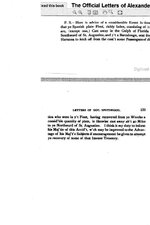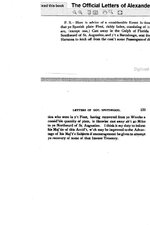ivan salis
Gold Member
- Feb 5, 2007
- 16,794
- 3,810
- 🏆 Honorable Mentions:
- 1
- Detector(s) used
- delta 4000 / ace 250 - used BH and many others too
well folks thanks to a freind of mine (chagy) forwarding me a bit of info ---"proof"--- I have finally locked down the fact ( which I have long "thought" but needed written "proof of" ---since to think is one thing but to "know" for a fact is another) that the vessel terms for fragata * and barcalongo * are one in the same type of vessel in 1715 terms ---
chagy's info --was a letter about the building of a vessel in 1715 --- " a barco longo o fragata"-- in english--- "a barco longo or fragata "---- barco / barca longo is just a spelling veriant (means the same either way) so barcalongo (used by spotswood) is barca longo (properly ) which is barco longo as well which is used in the other letter "barco longo or fragata" -- so one in the same.
big fat hairy deal right? --- actually yes it is ---because when the 1715 fleet wrecking was reported to havana . cuba by a small life boat sent to havana --its reported that the govenor of cuba (casatorres) ordered a salvage fleet to be gathered up and sent to the site to recover the royal items , gold ,silver and vips * --- 7 balandras (sloop rigged single masters) and one fragata --- (note surely the name of the fragata would have been recorded in the harbor exit log.)
english govenor alexander spotswood in a PS in his letter of Oct 24th noted that a "barcalongo" sent from havana to pick up vip's and treasure was like wize castaway about 40 miles northward of st augustine*
thru the harbor exit logs the name of the fragata should be findible ---once the "name" of the fragata is known -- a "manifest " hunt in the archives should produce a manifest showing what items it was carrying back to spain -- as a fragata class vessel sent from havana to the scene it was most likely sent to see first hand and pick up dispatches from on the scene commanders and whatever royal treasures it could as well as vip's and to rush them back to spain * --fragatas are the type of fast sailing vessels often used as "mail or dispatch boats" ---this would account for her being lost north of st augustine * (nassau sound is about 40 miles north of st augustine --spanish 1715 era fleet items have been found in the sound area) --- thus she was "spain" bound at the time -- she would not have stopped in st augustine --since there had already been "treasure issues" there and so st augustine was placed "off limits" to treasure bearing vessels by order of those in charge of the salvage efforts (the treasure was being taken back to havana---except for the "dispatch boat" which was to carry the word of the disaster back to spain along with whatever royal goods and high dollar items it could get)--plus she was well provisioned before leaving havana sothere was no need to stop in st augustine .
The bottom line is the nassau sound wreck that many folks have wondered over for years---(who or what is she?) --might now have a "name" and a cargo manifest.
chagy's info --was a letter about the building of a vessel in 1715 --- " a barco longo o fragata"-- in english--- "a barco longo or fragata "---- barco / barca longo is just a spelling veriant (means the same either way) so barcalongo (used by spotswood) is barca longo (properly ) which is barco longo as well which is used in the other letter "barco longo or fragata" -- so one in the same.
big fat hairy deal right? --- actually yes it is ---because when the 1715 fleet wrecking was reported to havana . cuba by a small life boat sent to havana --its reported that the govenor of cuba (casatorres) ordered a salvage fleet to be gathered up and sent to the site to recover the royal items , gold ,silver and vips * --- 7 balandras (sloop rigged single masters) and one fragata --- (note surely the name of the fragata would have been recorded in the harbor exit log.)
english govenor alexander spotswood in a PS in his letter of Oct 24th noted that a "barcalongo" sent from havana to pick up vip's and treasure was like wize castaway about 40 miles northward of st augustine*
thru the harbor exit logs the name of the fragata should be findible ---once the "name" of the fragata is known -- a "manifest " hunt in the archives should produce a manifest showing what items it was carrying back to spain -- as a fragata class vessel sent from havana to the scene it was most likely sent to see first hand and pick up dispatches from on the scene commanders and whatever royal treasures it could as well as vip's and to rush them back to spain * --fragatas are the type of fast sailing vessels often used as "mail or dispatch boats" ---this would account for her being lost north of st augustine * (nassau sound is about 40 miles north of st augustine --spanish 1715 era fleet items have been found in the sound area) --- thus she was "spain" bound at the time -- she would not have stopped in st augustine --since there had already been "treasure issues" there and so st augustine was placed "off limits" to treasure bearing vessels by order of those in charge of the salvage efforts (the treasure was being taken back to havana---except for the "dispatch boat" which was to carry the word of the disaster back to spain along with whatever royal goods and high dollar items it could get)--plus she was well provisioned before leaving havana sothere was no need to stop in st augustine .
The bottom line is the nassau sound wreck that many folks have wondered over for years---(who or what is she?) --might now have a "name" and a cargo manifest.











